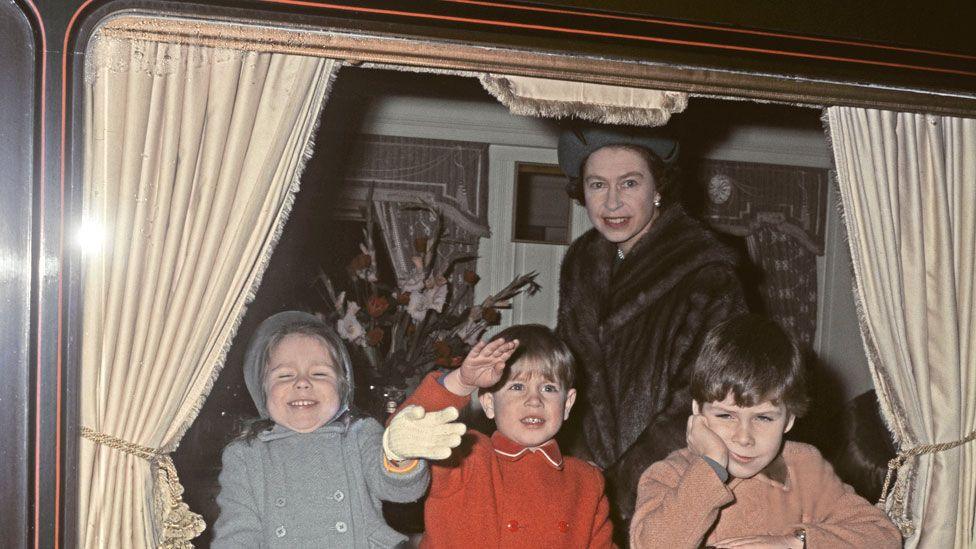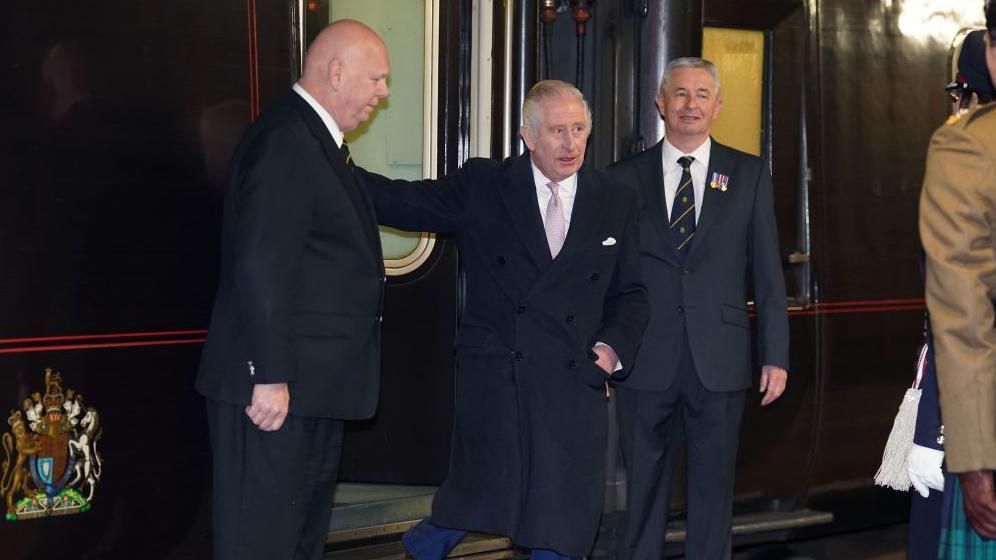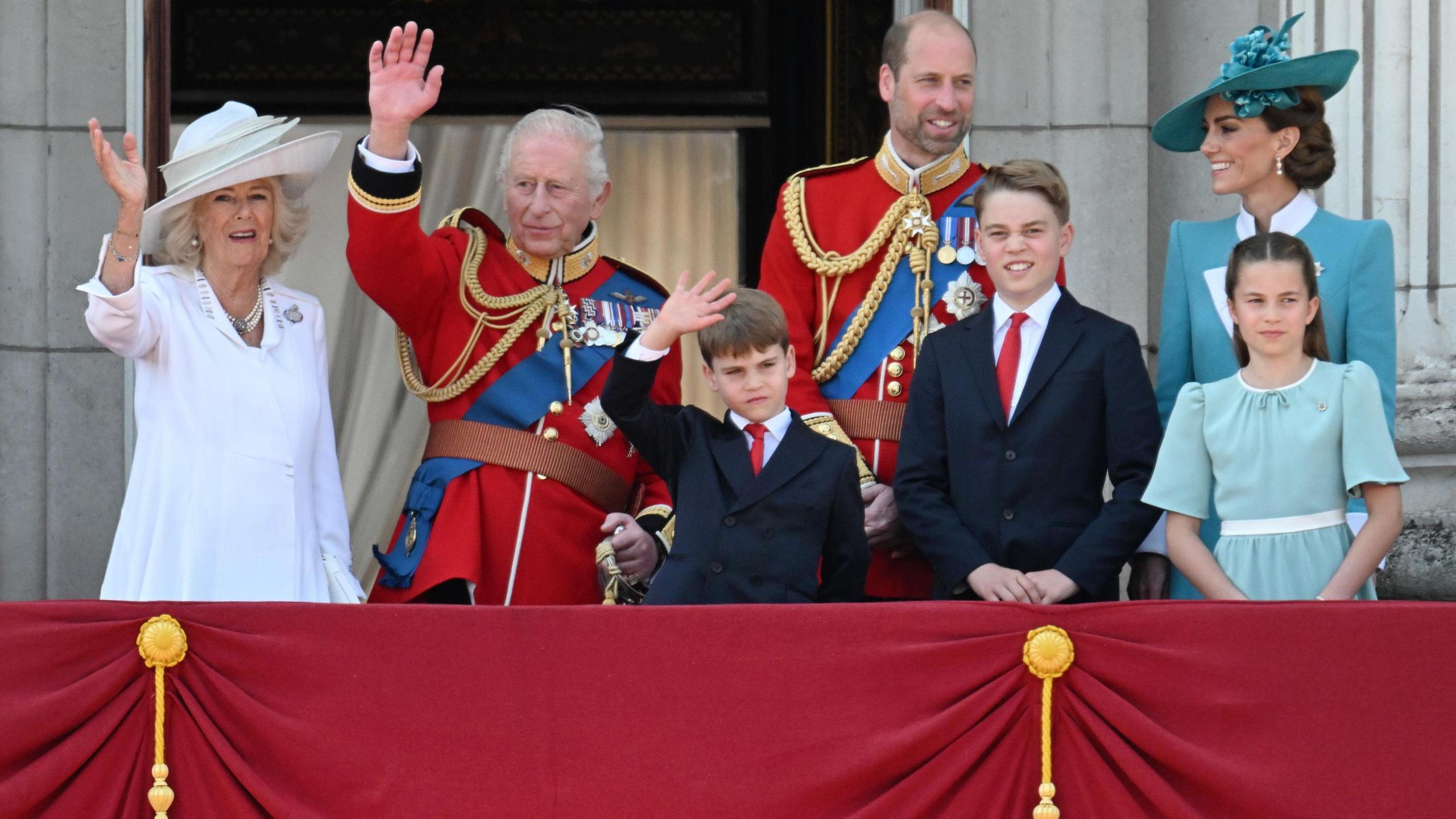Royal train to be cut in Palace cost-saving measure

Queen Elizabeth II on board the Royal Train with her son Prince Edward (centre), niece Sarah Armstrong-Jones (left) and nephew David Armstrong-Jones (right), in 1968.
- Published
The royal train is going to be taken out of service by 2027, in a cost-saving measure announced by Buckingham Palace.
There have been dedicated trains for monarchs since Queen Victoria's reign, but as part of a "drive to ensure we deliver value for money" it's been decided to decommission the historic rolling stock.
The announcement came alongside the annual publication of royal finances, which showed that a journey on the royal train, from Gloucestershire to Staffordshire and then London, over two days in February, had cost more than £44,000.
The Royal Family will still travel on regular train services - and the annual report showed 141 helicopter trips were taken last year, costing £475,000.
Royals to get extra £45m as Crown Estate profits soar
- Published24 July 2024
Royal estates 'receive millions from public bodies and charities'
- Published2 November 2024
James Chalmers, the Keeper of the Privy Purse, responsible for the royal finances, said the decision to stop the royal train would mean "the fondest of farewells", but "in moving forwards we must not be bound by the past".
The royal train will be taken around the UK before it is removed from service, after which it could be put on public display. The royal train consists of nine carriages, with different locomotives hired to pull them.
The idea of a royal train goes back to Queen Victoria commissioning special coaches in 1869, with the service being used to take the Royal Family around the country.
"The royal train, of course, has been part of national life for many decades, loved and cared for by all those involved," said Mr Chalmers.

The royal train could be put on public display after it leaves service
The train had been used extensively for events during the late Queen Elizabeth's golden and diamond jubilees - with the most recent update to the carriages taking place in the mid-1980s.
But the latest accounts, for 2024-25, show the train only being used on two occasions, raising questions about maintenance and storage costs.
That's alongside other travel costs such as 55 private charter flights costing almost £600,000 and scheduled flights costing £126,000. The total cost of royal travel is £4.7 million, a rise of £500,000 from the previous year.
The single biggest travel item was £400,000 for the King and Queen's trip to Australia and Samoa.

The Sovereign Grant is being increased to pay for Buckingham Palace renovations
The latest financial report for 2024-25 shows the Sovereign Grant remaining at £86.3m. This grant is the public funding for the running costs of the monarchy, such as travel for official duties, staffing and the maintenance of royal buildings.
The level of funding for 2025-26 is rising to £132.1m - with this higher level of funding staying for two years to complete renovation work at Buckingham Palace.
The cost of this 10-year, £369m building scheme at Buckingham Palace has pushed up the Sovereign Grant - which in real terms, taking into account inflation, is now about three times higher than when the Sovereign Grant funding was introduced in 2012.
Funding comes from the Treasury, with the amount based on a percentage of the profits of the Crown Estate.
This year's annual report shows the Royal Family carried out over 1,900 engagements, with almost 94,000 guests attending events at royal residences.
There were also diplomatic occasions, such as hosting Qatar's state visit to the UK.
A financial report for the Duchy of Cornwall, the estates which provide an income for the Prince of Wales, showed a profit of £22.9m, slightly down on the previous year.
There had been media criticism of the duchy's finances - and in response Kensington Palace has said that the emphasis will be on a positive social impact.
Will Bax, the duchy's new secretary, said there would be a "modern, socially minded" approach, which could see some charitable organisations and community groups having their rents waived and others with 50% reductions.
This would cost "significant sums", said Mr Bax, but it was part of a focus on turning the duchy into a social enterprise, supporting communities and reflecting Prince William's interest in projects such as reducing homelessness and tackling climate change.
Anti-monarchy campaigners Republic criticised the levels of royal income at a time when there were debates about "cutting welfare for people with disabilities".
Republic's chief executive Graham Smith described royal funding as a "scandalous abuse of public money", with published figures not including costs such as security.

Sign up here to get the latest royal stories and analysis every week with our Royal Watch newsletter. Those outside the UK can sign up here.